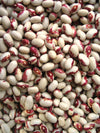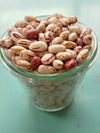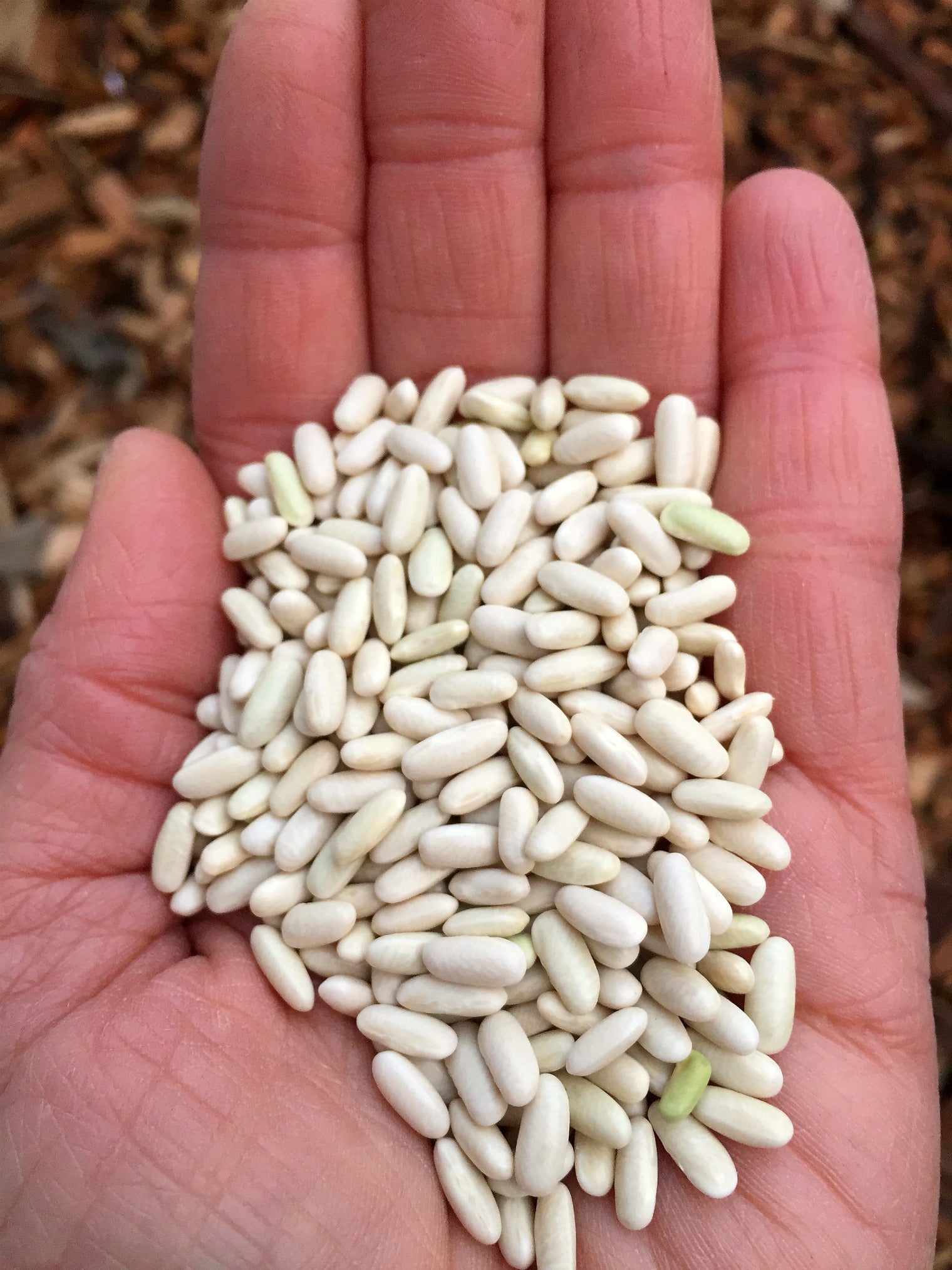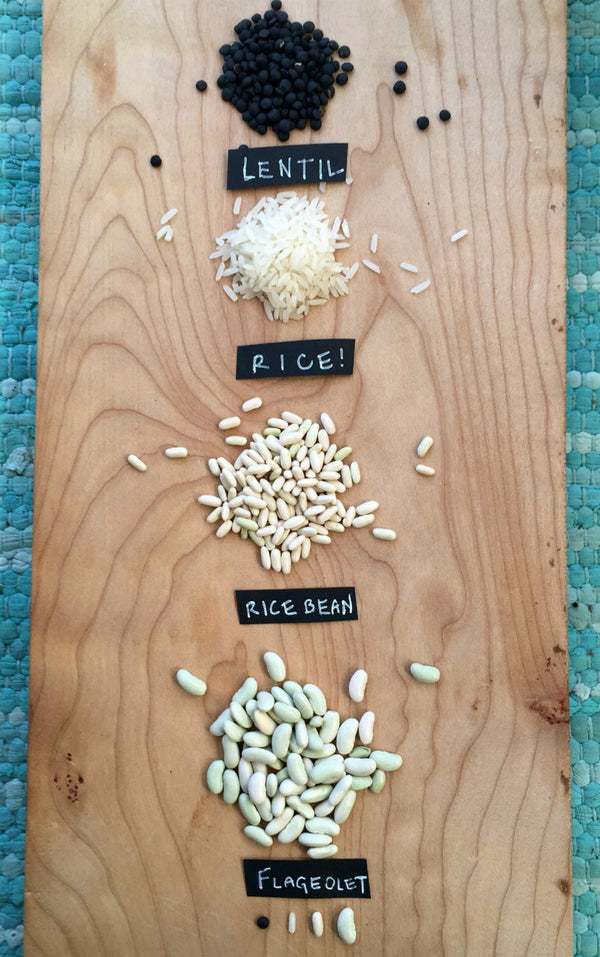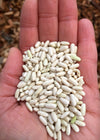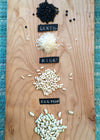Bean, Bush Dry, 'Hungarian Rice Bean'
Why is no-one planting these beans?! This is a discussion we had today (Feb 7, 2020) in the office as I stared longingly at the lovely white little morsels of deliciousness. Now, we cannot make you, but you will be happy if you sow these and then eat them. Promise! Also, we will be happy and spreading happiness is always a win...♥
In brief mention of this charming variety, buried within a description of the Comtesse de Chambord rice bean, Vilmorin's The Vegetable Garden from 1885 states that there is a "very small-seeded variety of this plant, which produces vast numbers of pods". Vilmorin calls this the Haricot Nain de Hongrie, Hungarian Dwarf Rice Bean. While these two appear together in print, the Hungarian Rice Bean is likely more closely related to the Flageolet Vert, with whom it shares a slender, oblong seed shape and a proclivity to produce many pods. Due to the petite dimensions, rice beans cook up rather quickly, 25-30 mins, without the need to soak beforehand. The cooked beans are toothsome and creamy, their skin keeping them together while cooking but easily yielding to the bite. Excellent dressed lightly with salt and olive oil, the eye-catching miniature seeds also have us dreaming of other tiny foods to pair with. Truly a unique bean at 1/4" long and 1/8" wide, highly recommended! Amazing flavor in a tiny package.
95 days dry. UO
Packet: 1/2 oz (~250 Seeds)
Product Code: BEA-HR-pkt
Availability:In stock
| Translation missing: en.products.general.options | Translation missing: en.products.general.qty | Translation missing: en.products.general.qty |
|---|---|---|
|
$4.50 |
||
|
Out of stock |
$12.00 |
|
|
Out of stock |
$18.00 |
Growing Info
SOWING:
Direct seed after the last frost date when soil has warmed.
Note: Beans prefer well-drained, warm soil.
PLANTING DEPTH:
1"
SPACING:
6 seeds per linear foot, 2-3" between plants, in rows 15-18" apart.
EMERGENCE:
5-10 days @ soil temp 65-90F
LIGHT:
Full sun to part shade
FERTILITY:
Low to average. Beans prefer well-drained warm soil with a pH between 6.0-7.0.
ADDITIONAL NOTES:
Beans prefer warm soils and may rot at lower temperatures. This is particularly true for white seeded varieties. You love beans. Patience.
To increase yields in areas where beans have not previously been grown, use an inoculant to introduce rhizobia bacteria into the soil.
Allow pods to dry on plant before harvest.
